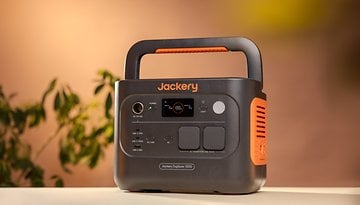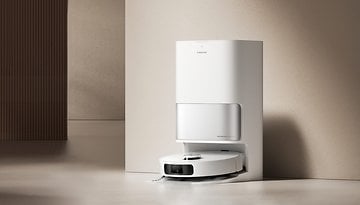Amazon Echo Hub Review: Alexa Finally Gets Touchscreens Right
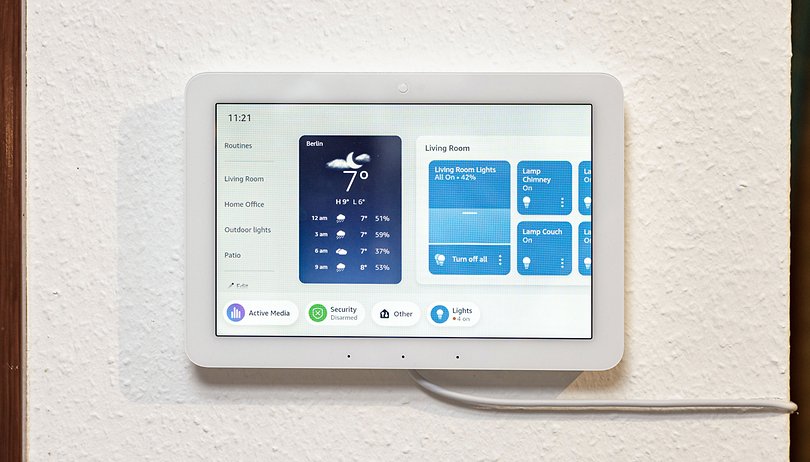

The Amazon Echo Hub is nothing less than a revolution in the Alexa ecosystem. With the new wall-mounted tablet, Amazon's smart home ecosystem finally has a usable touchscreen interface. Read the nextpit review of the Amazon Echo Hub to find out why this is so ingenious.
Good
- Simple design and neat display
- Proximity sensor works reliably
- Power/network connection via PoE Ethernet
- Successful touchscreen interface
Bad
- Case looks a bit old-fashioned
- Widget selection is still limited

Amazon Echo Hub in a nutshell
The Amazon Echo Hub is one of those devices that makes you think: why only now? Nothing about this wall-mounted tablet is actually particularly complex or innovative, but the device nevertheless offers a completely new view of your own smart home ecosystem in the Alexa cosmos—literally. This is because there is finally a solution to visualize the increasingly powerful device fleets in a meaningful way. The previous Echo Show devices were barely usable for this.
Amazon's move is also exciting when looking at the market as a whole: With the Echo Hub, the manufacturer is making inroads into the smart home panel sector, which was previously largely dominated by DIY solutions, for example with Home Assistant or professionally installed systems based on KNX, for example. The latter are expensive and usually age poorly, while the former are fiddly.
Apart from that, there aren't many surprises with the Echo Hub. Like Amazon's current Echo lineup, this device also offers an integrated Matter Hub, microphones and speakers for Alexa voice control as well as a host of practical sensors. The device itself doesn't have any real weaknesses—the problems lie more with Amazon's ecosystem itself, which has "grown" in places.
Design and display
The Amazon Echo Hub is purpose-built. Neither the design, the speakers, nor the display are spectacular in any way-but they don't have to be. After all, the hardware should ideally fade completely into the background and serve as a window into the Alexa ecosystem. And what can I say? It works flawlessly.
Pros:
- Practical, solid design.
- Decent display.
- Ethernet connection with PoE.
Cons:
- Stand as an optional accessory.
- Housing a little cheap.
- No camera.
As soon as I touched the outer packaging, I thought to myself: Wow, this is small. And yes, the Echo Hub is relatively compact at 20.2 x 13.7 cm and its 8-inch display. However, the 1.5 mm thick casing and wide display edges make the device look like a tablet from the early Android era.
Viewed from the front, the device is very reminiscent of the Echo Show 8 nextpit tested a while back in terms of screen diagonal and display edges. Unlike the Show 8, however, the Hub does not come with a stand from the factory but is intended for wall mounting.
To hang the Echo Hub, you first screw a plastic bracket onto the wall and then slide the tablet onto the hooks from above. Practical: There is a recess on the back of the Echo Hub where you can roll up and hide excess cable. The supplied USB-C power cable is a pleasing 1.8 m long—but also gets in the way if you hang the wall-mounted tablet directly over a power socket. A suitable power adapter is also included in the box. Bonus point: Alternatively, power can also be supplied via Ethernet with PoE.
Finally, the display with its 1,200 x 800 pixels on 8 inches is no multimedia powerhouse. But honestly, you won't be sitting in front of the screen in the hallway and binging your series. More importantly, the touchscreen reacts quite quickly to inputs, even if entering the password was bizarrely awkward at first.
However, it works perfectly during operation. Thanks to the light sensor integrated above the display, the display always adjusts its brightness to the ambient light and looks pleasant. Another practical feature: the proximity sensor automatically switches the Echo Hub off when nobody is nearby—and on again when there is movement. This works absolutely reliably in practice.
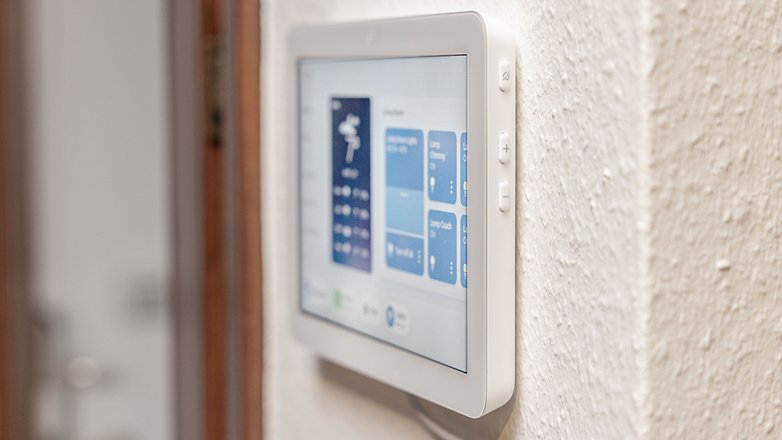
Finally, there are three buttons on the right-hand side of the housing for louder, quieter, and for deactivating the microphone. There is also a pair of stereo speakers on top of the Echo Hub, which serve their purpose well for voice output, but are otherwise at a higher tablet level. There are three small holes under the screen, behind which Amazon mounts the microphones.
The Echo Hub doesn't have a camera, although that's fine with me personally. Nevertheless, the feature is on the "missing" side if you want to use your Amazon devices as an in-house video communication platform via drop-in.
Interface and operation
The Amazon Echo Hub breaks with the creepy touch interface of previous Echo Show devices and relies on a new, (this time really) widget-based interface. There are still a few limitations here and there, but for the most part, the interface works really well.
Pros:
- Finally a real smart home controller from Amazon.
Cons:
- No widgets for individual devices.
- Limited widget selection.
- Map View not yet available.
The Echo Hub interface is divided into two parts. On the left-hand side of the screen, you will find a list with a link to all your routines and, below this, the rooms that you have set up in your smart home. At the bottom of the screen, the hub shows you various device categories, such as your surveillance cameras, your thermostats, your smart lights or your alarm system.
Amazon automatically decides which items appear here based on the devices linked to your account. If I tap on the alarm system, I can switch between the different "Inactive", "Home" and "Away" modes of my Ring alarm system. Under the cameras, for example, I can find the eufy cameras that I have connected to Alexa and can access the live images. There is also an "Other" item, under which I can find a Ring door sensor and my smart dishwasher, for example.
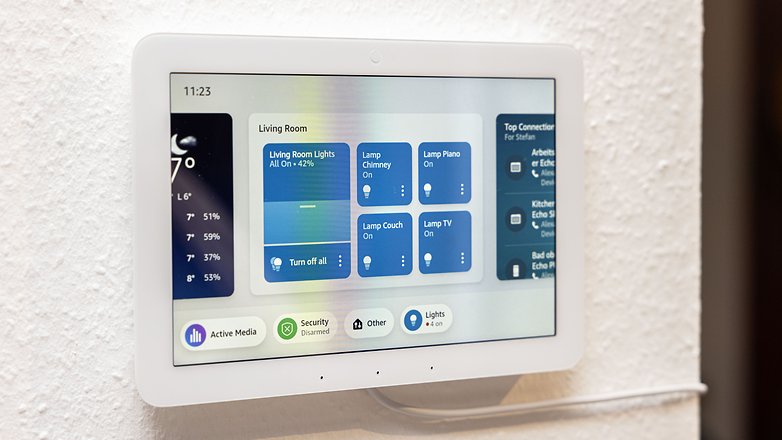
The widgets take up most of the screen. Here you can use the rather manageable portfolio of Echo Show widgets, but there are also a few Hub-specific widgets. The room widgets, which show you all the smart devices in the respective room, are particularly exciting. For example, you can see all the lights at a glance and can switch them on and off individually and dim them collectively, as well as display the temperature setting of your radiator thermostat.
The camera widget shows individual still images from your various surveillance cameras, the Spotify widget shows music playback and the weather widget shows the current temperature and a forecast for the coming hours.
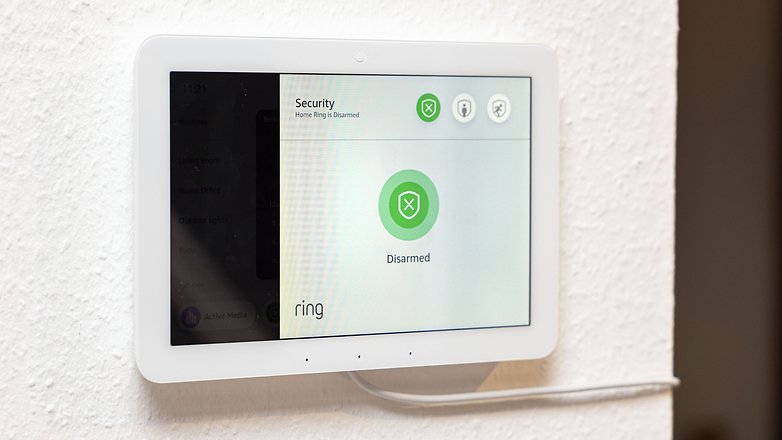
Too bad at this point: individual devices cannot (yet) be added here. So my dishwasher remains buried under "Other". And it does not prominently display the washing progress on the home screen or can be started directly from there. I also can't use features such as the dishwashing program recommendation based on the loaded dishes from the dishwasher app on the Echo Hub, as this function is not passed on to Amazon via the associated skill.
I will only miss these specific functions when an Echo Bot also loads my dishwasher at some point in the far future—but they show the limitations of the Echo Hub: to a certain extent, you are always dependent on the manufacturers of your smart home devices and rarely get the same range of functions as in the manufacturer app.
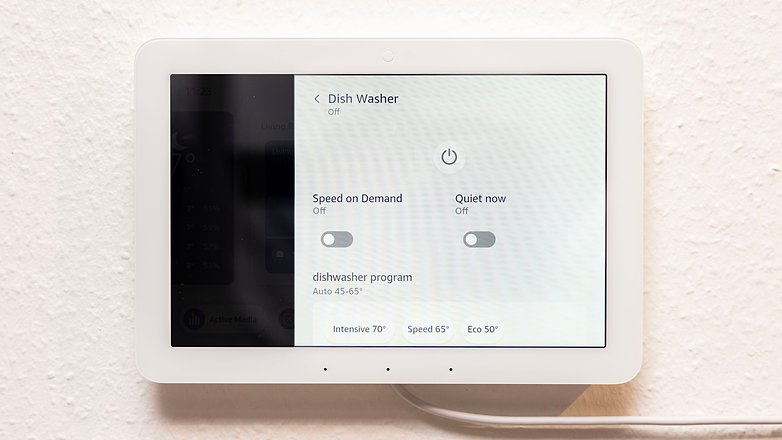
In the coming months, Amazon plans to add another dimension to the interface: Map View. Here you can save a floor plan of your home and place the smart home devices there. A practical test will have to show whether this is useful or a gimmick as soon as the feature is available. At least as things stand today, I can still remember where the 38 devices connected to Alexa are located, even without a map.
Echo Hub with Alexa ecosystem
Apart from the features described here, which are truly unique to the Echo Hub, you naturally have full access to the Alexa ecosystem and all its functions via the new wall tablet. This means that you can integrate all conceivable smart home products and control them via the Echo devices either by voice or, in the case of the Hub, via touchscreen. And you can create different routines to combine the various products.

Here you can let off steam from meaningless to useful. For example, I have just set up the FP2 presence sensor from Aqara so that it switches off all the lights in the living room if no person has been detected for 30 minutes—the Amazon app suggested this routine itself based on the devices in the room. Alternatively, the robot vacuum could also switch on automatically as soon as no one has been detected in the living room for 30 minutes in the evening and vacuum away the chip crumbs around the couch.
The Alexa ecosystem then offers numerous other features. In addition to the compatible hardware devices, there is also an extensive collection of apps, which Amazon calls "skills". One of my favorites, for example, is the shopping list app Bring, which allows you to dictate shopping lists and then share them between different users across Android and iOS.
You can use your Echo devices as a local (video) phone system via drop-in and talk to users in other rooms—so you never have to shout across your dominions again. And speaking of shouting: If desired, Alexa can also recognize different users by their voice.
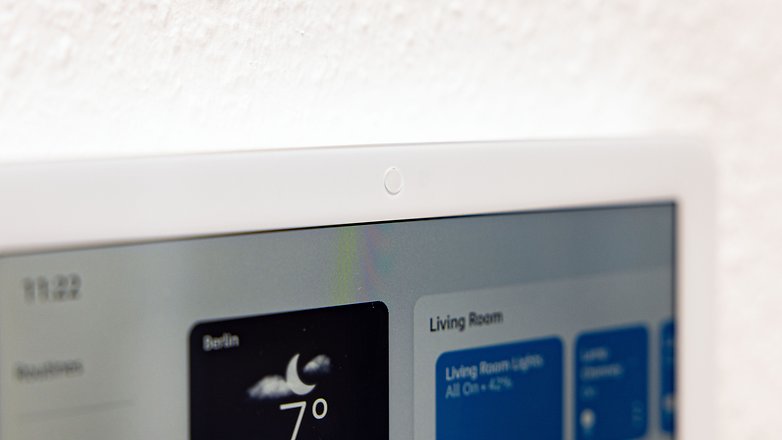
As gigantic as the range of functions has become, the Amazon ecosystem has also struggled with clarity. It's easy to see how the system has grown and some functions are simply not where you expect to find them. And don't try to combine devices with different system languages, otherwise you will be bombarded with sometimes very misleading error messages.
As an example, I recently spent three hours looking for a supposedly existing second Ring account that blocks the setup of an alarm system—and found that the error message disappears when I switch the smartphone language from English to German.
Final verdict
Yes, Amazon certainly still has room for improvement with its Echo Hub, which also comes with a hefty price tag of $180. But in all honesty, for a first wall-mounted tablet, this smart home hub is a great success—and offers the kind of interface I've wanted for the Echo Shows for years. Especially with several family members, changing smart home devices, and some very special features, the Echo Hub provides a great overview of the Alexa ecosystem, which has become really great in many areas—and is now even better.









